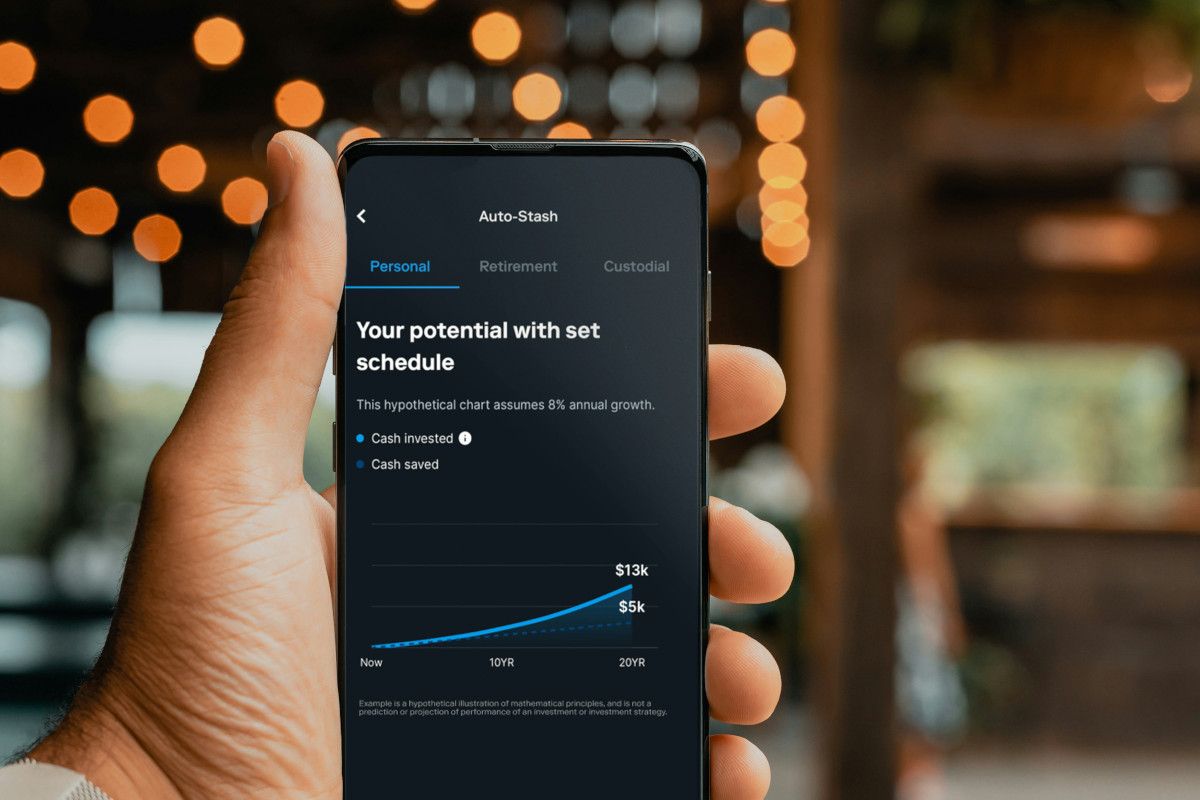Dividend stocks are a great way to achieve long-term capital growth or short-term income depending on your goals, which is why learning how to build a dividend portfolio is one of the best stock investment strategies.
But how many dividend stocks should I own? Why is diversification so important? What are some diversified dividend portfolio examples? These are just a few of the questions we’ll answer below in our guide on how to build a stock portfolio from scratch.
In general, we recommend at least 10-30 different stocks diversified by sector and yield. You should round out the rest of your portfolio with aggressive investment companies and potentially even other types of assets. It all depends on your investment goals, though.
One thing is for sure no matter why you’re interested in building a dividend portfolio – VectorVest’s stock software is a must-have in your arsenal. It tells you what to buy, when to buy it, and when to sell it, eliminating stress and emotion from your decision-making.
It’s the best stock picker for beginners and experts alike, but don’t just take our word for it – get started on the right foot today with a free stock analysis!
What is a Dividend Growth Portfolio?
We’ll start with the basics – what are dividend stocks and why do they belong in your portfolio? These stocks represent shares in companies that are known for returning a portion of profits to shareholders on a consistent basis – these payouts are referred to as dividends.
Now, a dividend growth portfolio is a collection of stocks specifically chosen for their potential to increase their dividend payouts over time. Such companies are often well-established, with stable earnings and strong business models that support ongoing growth and financial health.
Investors who build a dividend growth portfolio are typically seeking a reliable and potentially increasing income stream combined with the opportunity for capital appreciation.
Now, you may be wondering – are dividend stocks worth it? Absolutely, and there are two reasons why. Receiving regular dividend payments that grow over time can provide a hedge against inflation while compounding your returns through reinvestment.
However, it’s not as simple as just picking the top high-yield dividend stocks, or even the best safe dividend stocks. Learning how to invest in dividend stocks requires a bit more thoughtfulness to ensure diversification.
Why Diversification Matters
Diversification is all about reducing risk in a portfolio by spreading investments across various types of stocks. It essentially dilutes the negative impact of the poor performance of any single investment.
Investors can protect their income streams against sector-specific downturns or the poor performance of an individual company by owning a diverse mix of dividend-paying stocks from different sectors and markets.
Diversification also allows you to benefit from different growth patterns across industries, as some sectors may perform well while others lag in certain economic conditions.
A well-diversified dividend portfolio also helps you tap into a variety of industries with different dividend yield potentials, payment schedules, and growth opportunities, thereby stabilizing cash flow and potentially increasing the portfolio’s yield. So, how many dividend stocks should I own?
How Many Dividend Stocks Should I Own? 3 Diversified Dividend Portfolio Examples
As you start building a dividend portfolio yourself you’ll realize that there is no one-size-fits-all answer as to how many dividend stocks you should own.
But, it’s fairly agreed upon that somewhere between 10-30 is a good range to shoot for. We’ll cover some of the most popular diversified dividend portfolio examples below.
Diversifying Based on Sector
Sector diversification mitigates risks associated with specific industries. The goal is to invest across a broad range of sectors such as utilities, healthcare, consumer goods, and technology.
Each sector reacts differently to economic changes. For instance, utilities tend to be stable regardless of economic downturns, whereas technology can be more volatile but offers growth potential.
Diversifying Based on Dividend Yield
You’d think that a smart stock picking strategy involves choosing dividend stocks with the highest yield – but that’s not always the case.
Instead, we recommend you include a mix of high-yield stocks for better income generation and stocks with lower yields but higher growth potential. This strategy balances immediate income needs with long-term growth aspirations.
Diversifying Based on Payment Schedule
Another way you can build a diversified dividend portfolio is by choosing stocks with different payment schedules. This is an especially essential tactic for those investing after retirement and trying to learn how to live off dividends.
So, how often are dividends paid? You can have some stocks that pay monthly, some that pay quality, and some that pay annually.
Or, pick a blend of stocks that pay dividends at different times – for example, some stocks may pay in February, whereas others pay in March, April, etc. This approach ensures you have consistent income year-round.
There are many ways you can build a diversified dividend portfolio, and you may end up combining some of these methods for the best results. That being said, let us walk you through how to build a dividend portfolio below so you can hit the ground running today!
How to Build a Dividend Portfolio: Step-by-Step Guide to Building a Diversified Dividend Stock Portfolio
From learning how to analyze stocks before buying to perfecting your asset allocation in retirement, there is so much that goes into learning how to create a dividend portfolio.
The good news? A lot of the heavy lifting can be streamlined with the help of the best stock research app, VectorVest. Learn about the role our stock advisory services play in your portfolio-building efforts below!
Choosing Your Dividend Stocks
Start by researching companies with a strong history of paying dividends. Look for those with stable earnings, good growth potential, and a solid track record of increasing dividends.
These blue chip stocks with dividends are an excellent starting point. From there, you can utilize financial tools and platforms to analyze these metrics. While free stock research websites are great, you can get far better insights through our list of the best stock research websites.
We have more tips on how to do fundamental analysis of stocks and how to combine fundamental and technical analysis in our blog, as this will help you in finding undervalued stocks right now that also support steady dividends.
Like we said earlier, diversification is not something you should take lightly. Include a mix of high-yield dividend stocks for immediate income and dividend growth stocks for long-term appreciation. Your picks need to span various sectors to offset sector-specific risks.
What Else Should You Have in Your Portfolio?
So, how many dividend stocks should I own? You know now that the rule of thumb is somewhere between 10-30. What else should your portfolio consist of, though?
As we discuss in our guide comparing growth vs dividend stocks, stocks that may not pay dividends but still offer upside through increases in share price are worth including. They are particularly valuable in sectors experiencing rapid innovation, such as technology or biotech.
Other potential assets to include in your portfolio are REITs, bonds, and MLPs.
Position Size
Choosing your specific stocks to invest in is just half the battle – figuring out how much you want to invest in them is also important.
Determine how much to invest in each stock based on its risk profile and its potential return. Avoid overconcentration in any single stock or sector to maintain a balanced portfolio.
Some suggest that you should evenly weight all your stocks, but we recommend investing more heavily in the safer opportunities within your portfolio. Higher-risk stocks or sectors should generally constitute a smaller proportion of your portfolio.
Update Your Portfolio Over Time
While you may feel as if the job is done after you’ve successfully built a diversified dividend portfolio, this is an ongoing process. You need to make adjustments every so often.
Assess the performance of individual stocks and the overall health of your portfolio to determine which stocks are not pulling their weight in meeting your investment goals.
You should also take the time to set up a rebalancing strategy to maintain your intended asset allocation. This might involve buying or selling assets periodically to keep your portfolio aligned with your targeted risk level and investment strategy.
Furthermore, consider setting up a DRIP (dividend reinvestment plan) to take advantage of compounding growth potential. This will automatically buy more shares with the dividends you own. You can still pull profits as needed to fund ongoing expenses, of course.
Building a Dividend Portfolio Made Easy With VectorVest!
Now that you know how to build a dividend portfolio, it’s time to get to work. While the process itself can be incredibly time-consuming and convoluted, VectorVest is here to help handle most of the heavy lifting as the best stock apps for beginners.
It’s a proprietary stock trading system that has outperformed the S&P 500 index by 10x for 20 years and counting. The best part? It’s done this while simplifying the process of finding stocks, analyzing opportunities, and executing.
This is possible because it boils down complex stock market indicators into a more digestible format. You’re given everything you need to know in 3 simple ratings – relative value (RV), relative safety (RS), and relative timing (RT).
Each sits on a scale of 0.00-2.00 with 1.00 being the average – just pick safe, undervalued stocks rising in price to set yourself up for success in building a dividend portfolio!
VectorVest also helps you find the best stocks to invest in for beginners and supports diversification. We have pre-curated stock screeners in place that allow you to find the top stocks in a variety of industries or for a range of goals. That includes not just dividend stocks but also stocks with high volatility, falling stocks to buy, the best swing trading stocks, the best stocks to day trade, and more.
VectorVest is the best Android stock app and stock market app for iPhone. It’s essentially an investment in time savings and peace of mind knowing you’re making calculated moves rooted in a tried-and-true system.
So, why not streamline your efforts as you start building a dividend portfolio? Don’t work harder, work smarter with VectorVest. Get a free stock analysis and see how much time and stress it can save you today!
Final Thoughts on How to Create a Dividend Portfolio
That wraps up our guide on how to build a dividend portfolio! So, how many dividend stocks should I own, and how should I go about diversifying?
We recommend anywhere from 10-30 different stocks diversified by their yield, sector, payment schedule, and other factors. This will protect you from the underperformance of certain stocks while helping you enjoy higher profit potential.
Now that you know how to create a dividend portfolio that’s well-diversified, it’s time to get started. To streamline this process and ensure you’re making informed investment decisions, consider leveraging the tools and analytics available here at VectorVest.
You can also find additional resources in our blog, such as our blue chip investment plan, buying the dip, cutting losses, the best day to sell stocks, technical analysis vs fundamental analysis, swing trading vs day trading, and more.
So, what are you waiting for? Optimize your investments for maximum returns and stability with our stock analysis at portfolio management software today!







Leave A Comment